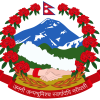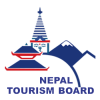Sightseeing inside Kathmandu Valley
Kathmandu Valley is a treasure trove of cultural, religious, and historical landmarks. Inside the valley, four of the most iconic sites—Swayambhunath, Pashupatinath, Boudhanath, and Kathmandu Durbar Square—offer a deep dive into Nepal’s rich heritage and spiritual traditions.
Swayambhunath (Monkey Temple)
Perched atop a hill, Swayambhunath is one of the most revered Buddhist stupas in Nepal. It is believed to be over 2,500 years old and holds immense religious significance for both Buddhists and Hindus. The stupa’s white dome and golden spire, adorned with the all-seeing eyes of Buddha, symbolize wisdom and compassion. The site provides a panoramic view of Kathmandu and is home to numerous shrines, prayer wheels, and playful monkeys, which give it the nickname “Monkey Temple.”
Pashupatinath Temple
Situated along the sacred Bagmati River, Pashupatinath is Nepal’s most important Hindu temple, dedicated to Lord Shiva. This UNESCO World Heritage Site attracts thousands of devotees, especially during the Maha Shivaratri festival. The temple complex includes beautifully carved pagoda-style temples, ashrams, and ghats (steps) where Hindu cremation ceremonies take place. The spiritual atmosphere, combined with the presence of sadhus (Hindu ascetics), makes this a fascinating and deeply moving place to visit.
Boudhanath Stupa
One of the largest stupas in the world, Boudhanath is a spiritual center for Tibetan Buddhism in Nepal. The massive white dome, topped with Buddha’s watchful eyes, stands as a symbol of peace and enlightenment. Surrounding the stupa are numerous monasteries, vibrant Tibetan shops, and cafes where visitors can enjoy traditional butter tea while observing the rhythmic chants of monks and devotees performing kora (circumambulation). The stupa’s mystical ambiance is especially enchanting in the evening when butter lamps are lit and prayers fill the air.
Kathmandu Durbar Square
Located in the heart of the city, Kathmandu Durbar Square is a historic complex that once served as the royal palace of the Malla and Shah kings. The square is a showcase of exquisite Newari architecture, featuring intricately carved temples, courtyards, and statues. Key attractions include the Hanuman Dhoka Palace, the Kumari Ghar (home of the living goddess Kumari), and Taleju Temple. Despite damage from the 2015 earthquake, the square remains a vibrant cultural hub, offering a glimpse into Nepal’s glorious past.
Each of these sites reflects Kathmandu’s rich spiritual and architectural heritage, making them must-visit destinations for anyone exploring the valley.





